Rangers come across carcasses in the wild on almost a daily basis. Be it a predator kill, natural death, poaching among many other causes during their daily patrols. But not just rangers, ecologists, researchers and my targeted persons Tour Guides do as well, it is of critical importance to report any mortality sighting to the authority of the conservation area, be it a Park, Reserve or private conservation area. You might help detect a disease outbreak, typically if its a predator kill there will be clues if not the predator then scavengers: hyenas, jackals or vultures circulating the site from above or already on the ground.
Back to my guides who provide vital opportunistic sightings of mortalities its always of much help if you can roughly estimate the period that the animal is presumed to have been dead for, now this is why I have decided to take time and come up with a few leads that can help give a rough estimate of the carcass decomposition stages, from a fresh carcass to a very old one.
If you’re in the field of mammalian research be it carnivores or the herbivores you will definitely find this article quite handy.
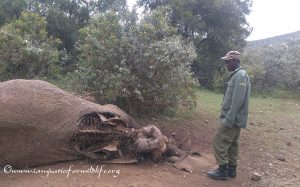
1 Day old Elephant Carcass
Determining sex of dead elephant
Patrol teams can determine the sex of a dead elephant by examining the animal’s body, tusks, and/ or skull as follows
Fresh body.
– If you have a complete fresh body, you may be able to determine sex from body shape.
Male; shoulder height above rump and this sloped shape becomes more prominent with age.
Female; Shoulder and rump remains same height but back elongates and shows saddle back, becomes more prominent.
Fresh Elephant carcass description (0-3 weeks)
-Complete carcass present.
-Evidence of scavenger activity (droppings of scavengers, e.g. Vultures, hyenas, etc.)
-Round swollen body with decomposition fluids flowing from the carcass.
-The possible presence of maggots.
-Wet intestines within the body or around it.
-Wet skin and visible rot patches.
-A strong smell from the decomposing carcass.
-If tusks are present, they will be firmly secured in the skull, if removed the hack marks are fresh.
Fresh Carcass
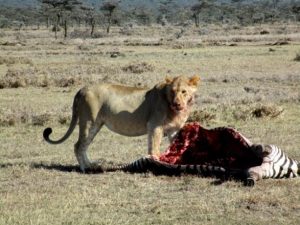
Carcass Description
-Pool of blood in the carcass.
-Meat still intact in the bones.
-Presence of a predator preying on the carcass.
12 Hour Old Carcass
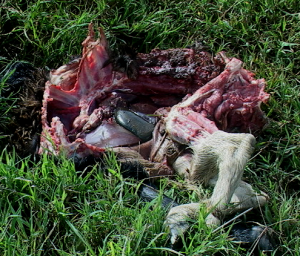
Carcass Description
-Pool of blood around the carcass.
-Flesh beneath skin giving rounded appearance.
– Some internal organs remaining, very minimal damage to bones
1-week Old Carcass
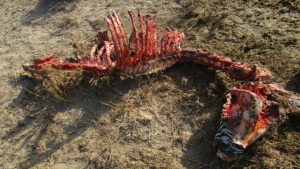
Carcass Description
– This is a recent kill, with blood still present in the bone.
– Less meat and skin on bones.
-No blood or fluid seen.
– Rot patch dry around carcass.
4 – Month Old Carcass
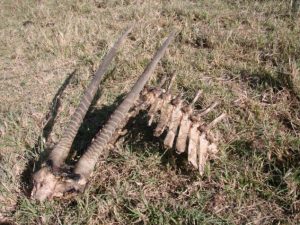
Carcass Description
-Flesh has been totally cleaned and it is turning greyish.
-Less meat on the bones.
-Bare ground around carcass
– Body not rounded or swollen, shrunken.
– No strong smell from the carcass.
– Some bones may still be attached to the skin but easily detachable.
6- Month Old Carcass
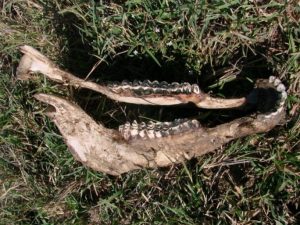
– Change of color i.e. whitish-greyish
– Less meat and skin on bones.
– No blood or fluid seen.
– Some bones may be joined to tissues.
– Absence of vegetation within the death spot.
– Death spot dry, absence of body fluids and stomach contents present.
-No fresh or recent signs of scavengers.
-Dry, desiccated skin.
1 Year Old Carcass
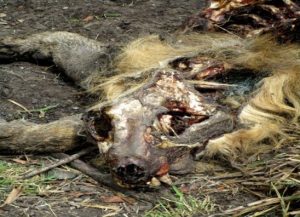
Carcass Description
-Bones are ‘White and growing’ in sunlight
-Vegetation has regrown around the carcass.
-No signs of body tissues.
– Bones may be scattered away from original death spot.
– Very little tissue noticeable attached to the bones.
– There may be little movement of bones from the original death spot due to scavengers.
Description of very old Carcass (More than 1 year)
– Bones are becoming increasingly grey in colour.
– Bones are cracking and crumbling.
– Bones usually scattered further away from the original point of death.
– Grey and cracked bones
Difficulties in Assigning Carcass Age stages
Old vs. Very Old
– The onset of colouration is dependent on environmental and climatic factors.
– May be difficult to distinguish white from grey bones in certain habitats.
Recent vs. Old
– Rot patch development depending on the size of the animal, the physical conditions of the death spot (rocky conditions, river bed, swamp etc) human and other wildlife interference.
– The lack of any tissue on the bones should indicate’old’ where there are problems in determining the status of a rot patch.
– Using external characteristics such as external genitalia. Soft external genitalia are, however, the first body part consumed by mammalian scavengers thus these may disappear or be modified very quickly after death.
“For most of history, man has had to fight nature to survive. In this century he has to realize that in order to survive he has to protect it.” Jacques-Yves Cousteau Here we celebrate the unsung wildlife heroes in the grassroots doing remarkable work to conserve our wildlife heritage, Get to learn about wildlife from a ranger/ ecologist in Kenya a freelance eco-traveler, experience the diverse cultures and African heritage from the natives and take an adventure to new destinations to learn about rare attractions that are hardly talked about and to top it all up some of the best wildlife photographs that will make you reconnect to your wild side appreciate everything around us and fall in love with the natural world, because “It is not enough to love the natural world; the point is to defend and preserve it.” Edward Abbey
Our wildlife, our responsibility. When it comes to standing up for our wildlife it’s better to be outspoken than unspoken.

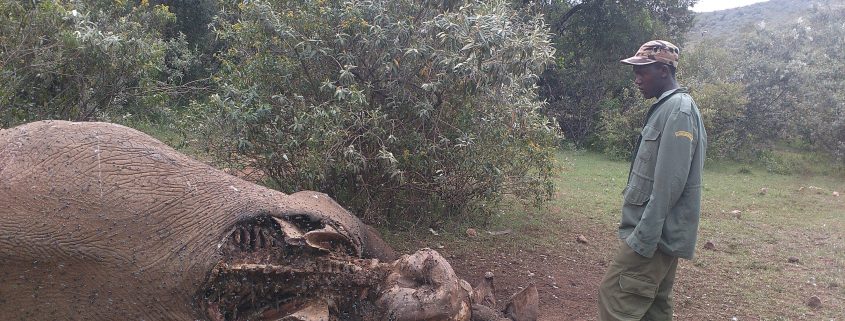
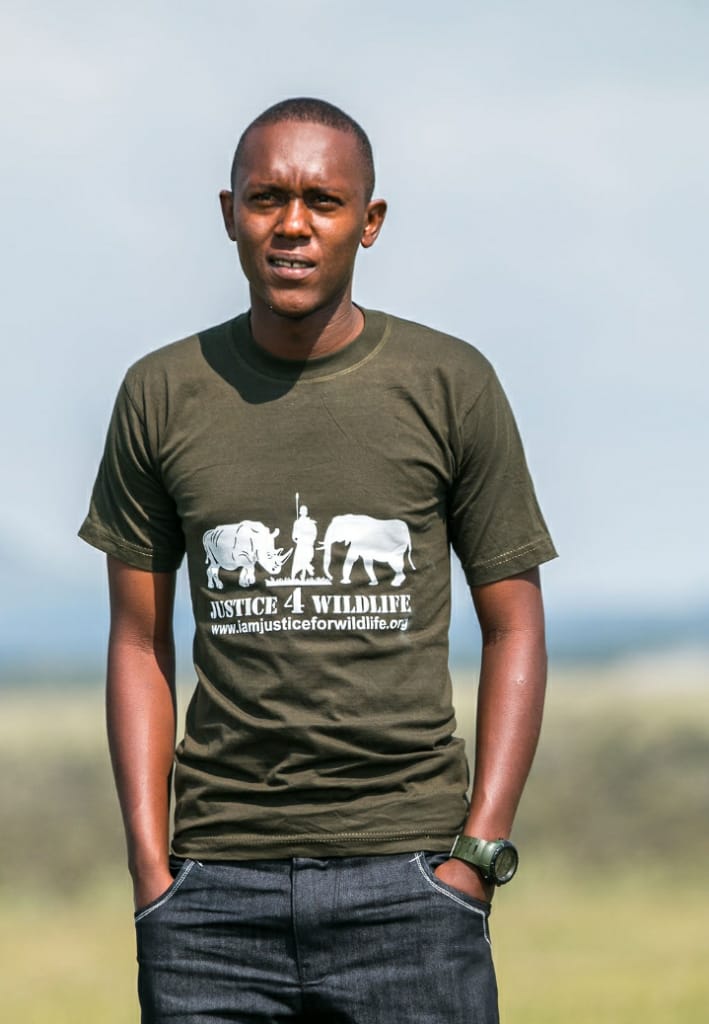


These skills need to be published Abraham Njenga, you should consider writing a book about your experiences
Thank you for your positive and encouraging feedback, I believe I am reaching a larger audience through the blog articles, writing a book!! I am definitely considering it. In the meantime lemme gather more skills and stories to feature on the book in the near future.
Thanks for the positive feedback, highly appreciated
Your blog articles are soo original, I love your authenticity Abraham Njenga
Thanks for your feedback, There there’s nothing like copy and paste here, my articles are straight from the lessons learned from the bush.
You make the life of a ranger sound soo interesting, is there any way I can come join you in one of your patrols to learn these skills from the bush?? I would really appreciate
You can come to Ol Pejeta Conservancy and book a bushwalk with me as your guide, believe me, it will be worth every penny
Whenever I get bored or when am in a long journey your articles keep me company, keep up with the good work its soo inspiring especially coming from a ranger
Thank you for your feedback, sharing my experiences from living in the wilderness is my little way of giving back to mother nature.
My vision is to change peoples perspective towards wildlife
I think this internet site contains very wonderful pent articles content.